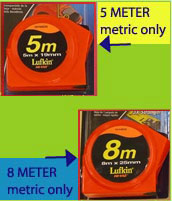In the spring of 2014 I sold the last two of my home made boats because I wasn’t using them and thought someone else should. Soon after they were gone I began to feel naked without at least one boat hanging on the garage wall so began thinking about what I’d want in a boat so I’d use it more. Over the following winter I designed and built a one-sheeter.

Scrampan |
Scrampan is a 12ft paddling boat made out of one sheet of ¼” plywood plus a bit more for the transom ends. It reminds me of low freeboard dugouts in southern hemisphere films. The goal was to have a lightweight boat which would be long enough to glide between paddle strokes, and the late TF Jones said that needs 12ft.

Cutting the plywood |

Plywood reassembled |
The plywood was cut into strips of 18”, 9” and three of 7” using the entire 48” width. (The bottom could also be 16” or 14” giving 8” or 9” sides still using the entire 48” width of the sheet with higher sides with less wetted surface and initial stability.) I got confused about which ends to cut the triangles resulting in two panels being wrong side out, but that only matters to those of us who fuss over imperfections. The thin triangles are 1.5” x 18” and the thick triangles are 3” x 7”. The panels were stacked and clamped to round the triangles with a sanding disk on a drill so the curves would all match. The transoms are raked 25 degrees to slap down waves which they do for up to 4” at which height the water starts splashing in. Sliding back to raise the bow helps and a light doorskin deck was roughed in later which works. The bottom is 18” and the gunwales 24” hence the 7” sides are raked 3” or 25 degrees the same as the transoms.

Screw and glue construction |
The construction method was screwed and glued (PL Premium) chine battens with butt blocks. I haven’t yet graduated to stitch and glue epoxy seams and taped butts. About 150 number eight screws 0.75” long were spaced 4” apart, staggered between sides and bottom. As usual it took a bit of strength to pull the ¼” plywood in at the ends. I lay the boat on its side and pressed down with all my weight. The plywood didn’t splinter. After the outer seams were sanded smooth the open end grain was sealed with epoxy resin spread with a toothpick before painting. The inside was given a coat of linseed oil thinned 50-50 with paint thinner. A discarded chair was re-glued and the bottom narrowed to use as a seat. It gives great back support and bracing for both single - and double - bladed paddling without the need for foot braces or for bracing the knees against the underside of a deck as in a decked-over kayak. A short discarded paddle was reworked and a double bladed paddle was made from a pair of rubber dingy oars stiffened by inserting wooden dowel. The boat is stable and reasonably fast in calm water. If I were to build another I would pull the ends in a bit more by cutting additional 0.75” x 9” triangles using the same ratio as the 1.5” x 18” which is about as much bend as can be got out of ¼” plywood.

Swamp and bail test |
I was concerned about the low sides allowing waves to swamp the craft. Enough foam floatation was installed to hold the gunwales above the surface so the boat can be bailed.
Because deck and foam add to the weight of the boat I’d like to replace the foam with floatation bags and the deck with a stretched skin.
 |
Single bladed test |
 |
Double bladed test |
 |
Off for a paddle on the Rideau |
 |
Kemptville Creek |
 |
Jock River |
The boat met my design requirements nicely. It was quick and easy to build. At 40 pounds it’s light enough to lift on and off the roof the car and carry to the water. In its first season I enjoyed exploring sheltered lakes, creeks, a reservoir, a pond and a canal. It’s not suited to open water or to windy days with small waves. It takes up hardly any room hanging on the wall of the garage. Made of non-marine lauan plywood it wants to be stored indoors. It would fit in the space between the garage ceiling and the overhead door. It slips readily through the basement window. For those who have access to Facebook there are more photos in this album.
|










